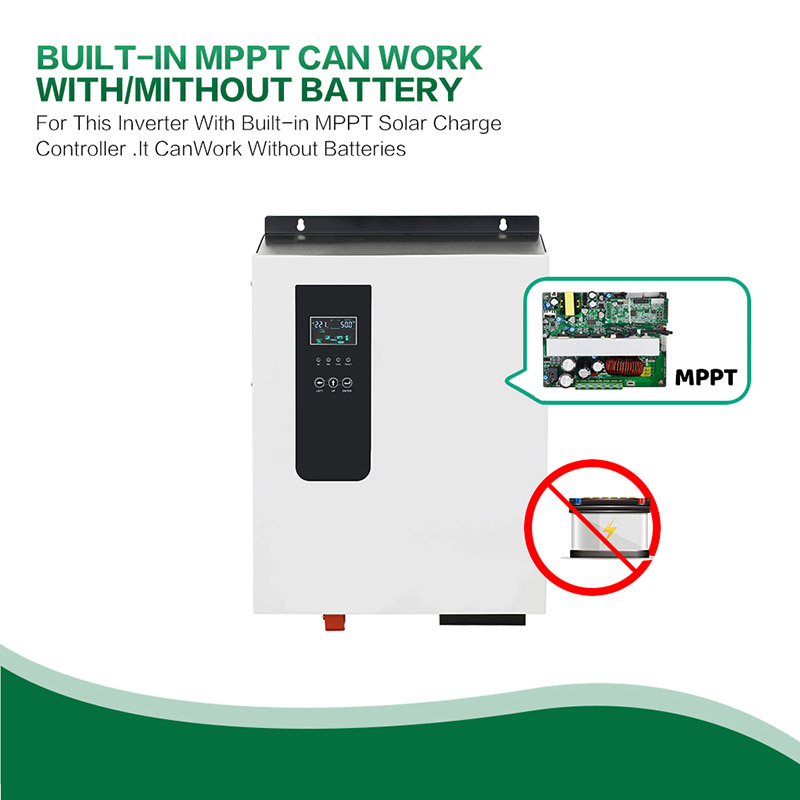4 Common High-Frequency Inverter Problems
 Jul 19,2022
Jul 19,2022

 Rekesun
Rekesun
As an essential component of photovoltaic power generation, the product status of high-frequency inverters is closely related to the smooth operation of photovoltaic power generation systems. Understand common high-frequency inverter alarms, accurately determine the cause of high-frequency inverter alarms, and make high-frequency inverters run smoothly.
High frequency inverter warning caused by non-internal components
If the screen or APP displays "Warning 103 or Warning 105", it means that the reading and writing of EEPROM has failed. Generally, restarting the high-frequency inverter can be repaired. If the screen or APP displays "Warning 100 or Warning 400", it means that the fan is alarming. First, check whether the fan is stuck by foreign objects, then manually stir the fan in the power-off state, and restart the high-frequency inverter. It is recommended that the high-frequency inverter generally clean the fan once every six months.

High-frequency inverter alarms caused by common external environments
1.LCD displays "No AC Connection"
This type of alarm means "no mains connection", which generally appears in single-phase high-frequency inverters, indicating that the mains is not connected or the AC circuit breaker is disconnected. When such an alarm occurs, check whether the AC side line connection is good and whether the AC switch is closed.
2.LCD displays "Overtemperature"
This type of alarm means "high frequency inverter overtemperature". Usually, the place where the high frequency inverter is installed is insufficiently ventilated, the high frequency inverter is exposed to the sun, and the fan of the high frequency inverter is abnormal. The reason for the overheating of the inverter. To solve this problem, it is first necessary to ensure that the high-frequency inverter installation site is ventilated to avoid exposure to the sun. For the abnormal problem of the fan, it is necessary to check whether the NTC line and the NTC temperature sampling circuit are well connected.
3.LCD displays "PV Isolation Low"
This type of alarm means "insulation resistance is too low", which may be caused by the influence of panel insulation, cable insulation, grounding reliability of component support, installation temperature and humidity.
To check this abnormality, first disconnect the AC/DC air circuit breaker, use a special MC4 dismantling wrench to remove the positive and negative poles of the DC measurement string, then use the multimeter megohm gear, the red test lead is connected to the positive pole of the string, the black test lead is grounded, read The measured positive-to-ground impedance reading of each channel, and then connect the red test lead to the negative pole of the string, and read each negative-to-ground impedance reading one by one. If it is greater than 50kΩ, the high-frequency inverter judges that the insulation of the string is reliable, less than or equal to 50kΩ, the high-frequency inverter judges that there is a problem with the insulation of the string, and the high-frequency inverter will automatically protect and stop working and report "insulation resistance is too low".
4. The high-frequency inverter screen does not display
The high frequency inverter does not display because the LCD has no DC input or the auxiliary power supply is abnormal. At this time, it is necessary to measure the DC input voltage of the high-frequency inverter with the voltage range of the multimeter. The total voltage is the sum of the voltages of each component, and the voltage problem is ruled out. After eliminating the voltage problem, check whether the DC switch, wiring terminals, cable connectors, components, etc. are normal.
The above is an analysis of the common high-frequency inverter alarm causes and general treatment methods. When the above methods cannot repair the high-frequency inverter alarm, please contact the relevant staff in time, and do not force the repair by yourself.



 Home
Home 17 Main Types of Solar Inverters
17 Main Types of Solar Inverters 







 syplighting.en.alibaba.com
syplighting.en.alibaba.com



